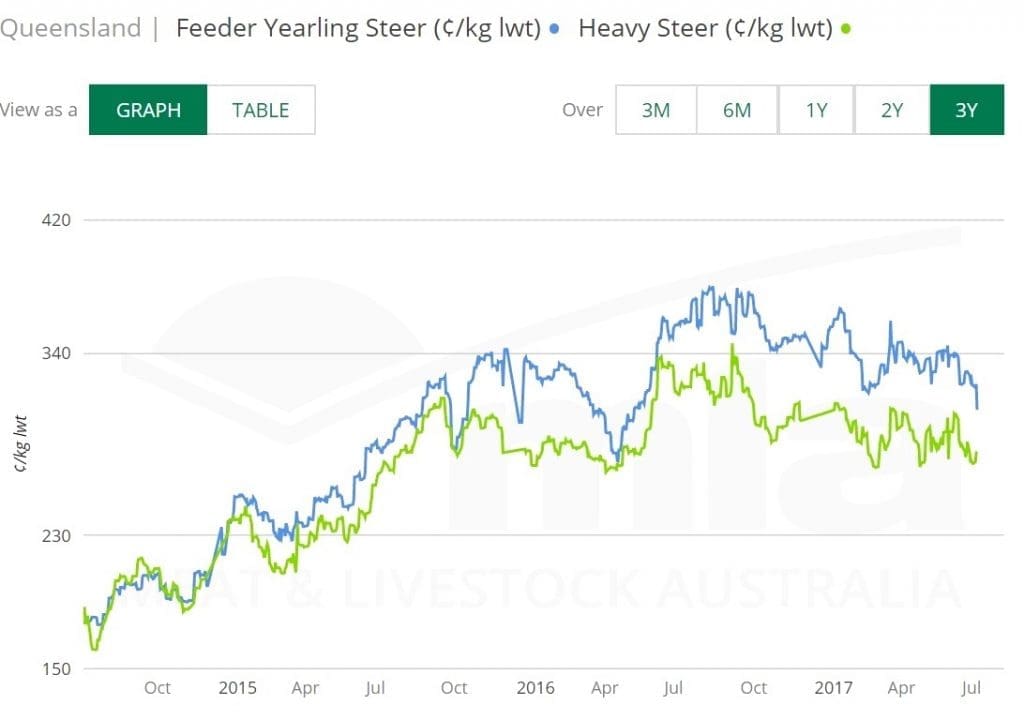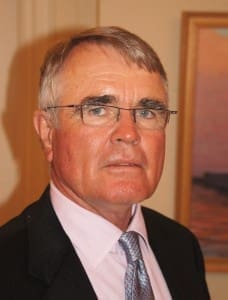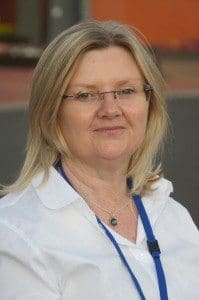IS THE northern beef industry drifting away from grassfed bullocks to feeder steer production?
It’s been a topic of considerable conversation in supply chain circles over the past six months or so.
Long-term grassfed bullock producers in Queensland have for the past two years been tempted by relatively higher prices on a c/kg basis for turning cattle off a year early as feeder steers, instead of grassfed ox.
At a time when the national beef herd is only just starting to recover from 20-year lows due to drought, record numbers of cattle on feed of 1.1 million head were reported in the latest June quarter feedlot industry survey.
While feeder steer prices have declined somewhat more recently, this graph published earlier on Beef Central clearly shows the widening price gap between finished grassfed ox and feeder steers.

We built the graph below comparing the NLRS Qld yearling feeder indicator (blue line) with Qld saleyards heavy steer price (green line). What it clearly shows is a gradual widening in price differential between feeders and grassfed heavy steers, on a c/kg basis, over the past two years. Click on graph for a larger view.
Queensland cattleman Peter Hughes made references to the growing interest in feeder steer production among some of the state’s traditional bullock producers during a presentation at a recent Brisbane Show function.

Peter Hughes
“I think it’s a permanent thing; I don’t think they will go back,” he said.
“That way it is at the moment: you can sell you feeder steers for $1400-$1500 (mid-August prices), or keep them another 12 months and maybe get another $150 or $200.”
“And it allows those people doing it to run more cows – at least another 20pc, and maybe more,” Mr Hughes said.
“And a 400-450kg steer is a lot easier on the country than a 650kg bullock. He needs half the country, and his weightgains up to that 450kg weight are really smart. And the beauty is, those feeders can easily be sold to feedlots in large lines of 1000 or 1500. That’s harder to do with grassfed bullocks.”
Mr Hughes said every feedlot he’d been to recently was ‘doubling’ in size, as part of this shift in production focus.
“Feedlots aren’t necessarily a big money-making part of the supply chain, but are a means to an end,” he said.
Lotfeeders aware of shift in focus
Australian Lot Feeders Association president Tess Herbert thinks the theory about a fundamental shift in northern production has merit.

Tess Herbert
She points to the record numbers of cattle on feed across Australia this year as evidence that more structural, rather than cyclical changes are happening in northern beef production.
“I’ve been talking with my fellow ALFA directors on this very topic in the past few weeks – particularly those based in Queensland,” she said. “We’ve identified the same trend.”
“What were talking about is country that used to be dedicated to heavy grassfed bullock production, that’s now being used, instead, to produce heavy feeder steers for 100-day programs.”
“It’s a mindset change among some Queensland producers,” Ms Herbert said.
“It may not suit everybody, but there’s a proportion of people who are now thinking that way. The driver has been the relatively higher prices for feeder cattle over slaughter cattle. But even if that (differential) reduces somewhat, we’d expect it to continue.”
The Australian cattle industry was now in a new trading band for cattle, Ms Herbert said, unlikely to ever return to those lower levels seen prior to the big shift in 2015.
“Prices may not return to those extreme highs we’ve seen in the past 12 months, but it’s a new world of trading cattle, and the demand from the feedlots is going to continue. In response, some producers are adapting their operations to meet this demand,” she said.
“With that country now dedicated to producing that feeder steer that the feedlot industry wants, there’s efficiency gains to be had – because those paddocks are no longer tied-up growing out those steers for an extra year on grass. They can be turned over to additional breeders.”
Even though things were tough currently on the processing front, branded beef programs were still performing relatively well, Ms Herbert said, and feedlots were part of those branded beef supply chains, delivering greater supply security. “All of those aspects are lining up,” she said.
While higher grain prices in recent months had put some recent pressure on feeder steer prices, feeders still looked attractive over bullock production, Ms Herbert said.
However there was a considerable distinction occurring between northern and southern regions.
“Our grain prices down south are still reasonable,” she said.
“We’re buying barley for our feedlots (Gundamain, near Eugowra in central western NSW, and Ladysmith, near Wagga) considerably cheaper than what wheat is worth on Queensland’s Darling Downs. Our cost-of-gain is better than cost-of-sale, meaning it is worthwhile feeding lighter cattle longer, to maximise that advantage. Plenty of ‘100-day’ cattle are in fact being fed 120-130 days.”
“But if those grain prices rise sharply again, those days on feed are likely to drop back again,” she said.
Ms Herbert said Australia’s grainfed beef production, currently around 36-40 percent of all beef produced on a long-term basis, could easily go to 50pc or more as a result of the production changes being seen, she said.
“I don’t think Australian beef production systems will ever approach those seen in the US, where virtually all steers and heifers go through feedlot programs. But if Australian feedlots are full – and expanding in size as they currently are, in a period of relatively low overall cattle production – it’s easy to see 50pc of all Australian beef coming from grainfed cattle some time soon.”
Ms Herbert said custom feeders tended to be a good indicator of overall feedlot occupancy levels, and reports out of Queensland were suggesting they had filled up over the past couple of months.
“If they are full, to me that’s a good barometer of occupancy levels,” she said.
If that high occupancy continued, did it suggest there could be another wave of feedlot expansion ahead?, Beef Central asked.
“I’m not so sure about the next cycle of expansion. The trend has been not many new feedlots being constructed, but expansion of existing facilities, which has been widespread. I suspect that will continue – both family and corporate-owned.”
Processor sees changing cycles
A senior operations manager with one of Queensland’s largest processors of both grain and grassfed beef said he’d certainly seen evidence of a shift out of bullocks into feeder steer production over the past year or two.
“Whether this is part of a cycle, or is a more fundamental industry change, is still hard to tell,” he said.
“Over the past 12 months it has been purely price driven, combined with dry conditions, making finishing bullocks on grass more challenging. But as we see in all areas of business, commercial reality will end up dictating what vendors do with their cattle.”
“Dry conditions in cattle areas are certainly playing a part, as have reasonably good growing conditions (up to this season) for grain. Cheaper grain mixed with cattle producers under weather pressure has certainly pushed more young cattle into feedlots.
“It’s very cost-effective to put weight on cattle in the feedlot at the current time,” he said.
“But I don’t think there’s a decision being made by anybody to move to a US-type grainfed model. At this stage, it’s being driven by conditions, not a fundamental desire to change the way the Australian cattle industry operates.”
Whether the current run of cattle being sold as feeders instead of finished ox continues would depend on season conditions, together with grain prices, the processor said.
“But what’s concerning is that the feeder steers that our company and others have been putting on feed this year, would have been next year’s grassfed bullocks. It means we hold grave concerns over supply of grassfed slaughter cattle for the first nine months of 2018.”
“The temptation to permanently abandon bullock production to turn off younger feeder cattle may be too attractive to ignore”
He pointed out that while it was relatively easy to ‘bring the production cycle forward’ a year by selling next year’s bullocks this year as feeders, it was in fact much harder to move in the opposite direction.
“Effectively, it means missing an entire annual production cycle, with big implications for cash flow,” he said.
“But it could be that temptation to permanently abandon bullock production to turn off younger feeder cattle may be too attractive to ignore. It stands to reason that the producer doing that can run a lot more breeding cows.”
“The big question is: what are processors (with feedlots) able to pay, long term for feeder steers, versus the grassfed bullock? When grain is $200 or less per tonne, it’s very efficient to grow an animal out in a feedlot. But when grain is $340/t or more, it’s not efficient at all.”
“But there are so many variables involved – weather and currency included. With an A$ at US80c, and grain at $320-$340/t, 100-day cattle are a loss proposition on an export market. That’s forcing a re-think from feedlots and processors about what they can afford to pay for a feeder steer.”
“Looking at Beef Central’s graph as an example, if the two lines for feeders and bullocks start to converge again, northern producers are likely to again start growing their bullocks out on grass.”



HAVE YOUR SAY